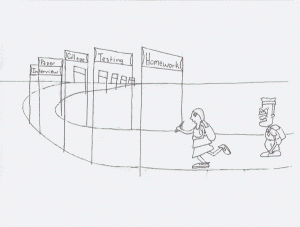 Standardized testing has been a controversial issue since it was introduced as a method of recruiting government officials in ancient China. Though it has changed over the centuries, the goal of standardized testing has remained the same: to provide an equal and unbiased way for test-takers to prove their merit.
Standardized testing has been a controversial issue since it was introduced as a method of recruiting government officials in ancient China. Though it has changed over the centuries, the goal of standardized testing has remained the same: to provide an equal and unbiased way for test-takers to prove their merit.
One of the first and most widespread practices to be attacked by critics of our society’s approach to education (such as films Waiting for Superman and Race to Nowhere) is that of standardized testing.
While a substantial body of research compiled by such sites as FairTest.org documenting the SAT’s flaws, such as elitism, bias towards certain ethnic groups, and bias against students with reading and learning disabilities, exists, few admission offices are willing to dismiss the tests and follow the progressive Bowdoin paradigm of optional score submission.
With college application numbers increasing every year, few schools have the luxury of assessing each student individually. SAT scores offer a baseline that allows colleges to substantially narrow the applicant pool.
At DA, whether in the form of winter dress down Fridays, hall feeds, or education about stress management, the faculty and staff continuously make an effort to reduce student stress.
This year, the March, May, and June SAT dates will all directly follow major Deerfield assessment periods, causing concerns about overloading students. Mr. Warsaw, the academic dean responded:
“We don’t control standardized testing,” he said. “Some departments, especially the math department, see that proximity as efficiency because some of the exams help students prepare. Our goal is to maximize the number of class days, which is essential to students’ learning.”